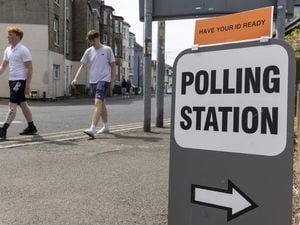OLYMPIA, Wash. — The Washington State Superintendent of Public Instruction has taken significant steps to address the nutritional needs of elementary students by approving a rule mandATING school districts to provide at least 20 minutes of lunch time for kindergarten through fifth-grade students. This new ruling, which was approved on March 14, 2025, will come fully effective during the 2029-2030 school year, allowing districts some time to adapt their resources and schedules accordingly.
The introduction of this rule is rooted in research advocating the necessity for children to have adequate time to eat. The federal government and educational specialists recommend children should receive between 20 to 25 minutes of seated lunch time after they have collected their meals. This aligns with growing concerns raised by parents about their children feeling rushed during their lunch periods.
While the new rule appears beneficial on the surface, it has met with resistance from many school administrators statewide. Deputy Superintendent of Battle Ground Public Schools, Shelly Whitten, expressed her apprehensions, stating, "I don’t agree with it. I’ll be honest with you," emphasizing the logistical and financial challenges the addition of 5 to 10 more minutes of lunchtime would impose on schools. Many districts currently struggle to accommodate their students within existing timeframes, and Whitten indicated this rule would require additional staff, cafeteria space, and approximately $30,000 per year for just one school to implement.
Opponents of the rule highlighted their concerns during the public hearings held earlier this year. At one January hearing, administrators from 18 different school districts voiced their disagreement with the regulation, citing financial hardships and spatial limitations within their facilities. Many are worried about how they would sustain additional lunch times without sufficient funds or staffing.
A recent survey conducted across 31 school districts in western Washington highlighted the prevalence of this issue: remarkably, 21 of those districts reported lunch breaks lasting 20 minutes or less—a standard many parents and experts believe is inadequate. This survey collected insights about lunch periods being often constricted, including time waiting in line and cleaning up afterwards.
Megan Lim, who has three elementary-aged children enrolled in Seattle Public Schools, shared her frustration over the current circumstances. "I asked the kids, how was your school day? And all three of them spoke up at once, complaining there wasn’t enough time to eat lunch," she recounted. Lim voiced support for the newly mandated 20-minute rule but expressed her disappointment about it not taking effect for another four years. "I’m a little concerned, actually, about this kicking the can down the road," she added, echoing the sentiments of many parents eager for immediate change.
The necessity for extended lunch periods does not solely stem from parental advocacy but is also reinforced by state law, which mandates elementary students to receive at least 30 minutes of uninterrupted recess each day. With the expansion of free and reduced-price meal programs leading to longer lunch lines and increased participation, lunch periods have been significantly affected, squeezing the time available for students to enjoy their meals.
For many, including Lim, the new rule will arrive too late to alleviate their current circumstances. "What it means for my kids is they are going to keep complaining about being hungry," she stated, highlighting the reality many children face within the state’s schools. The push for reform continues as parents and advocates alike hope the 20-minute rule will be implemented effectively sooner than expected, thereby guaranteeing all elementary students the necessary time to eat and thrive.
This situation tests the ability of school districts to balance fiscal realities against the nutritional and social needs of their students. With time ticking down until the rule goes effective, the debate surrounding adequate lunch periods is likely to remain heated as stakeholders attempt to find workable solutions to what families, educators, and administrators firmly agree is a pressing issue.



